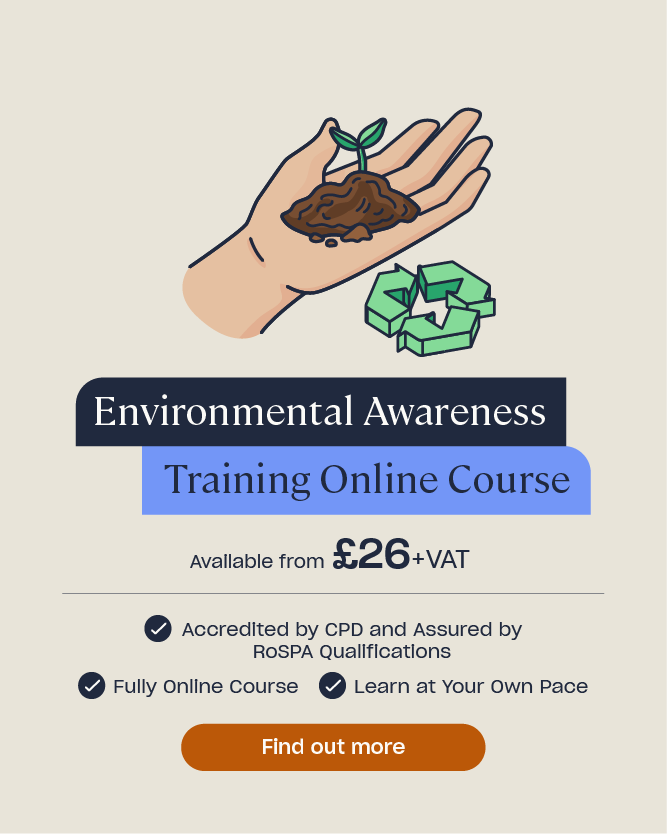Overview of The Environment Act 2021
Improving and protecting our natural environment is everyone’s responsibility. Growing social consciousness has increased people’s awareness of the importance of protecting the environment, resulting in increased expectations for governments and businesses to act more sustainably. As such, governmental policies that improve and protect the planet have become even more urgent. For the UK this has manifested in the Environment Act 2021 which seeks to enshrine environmental protection into law and improve air and water quality, increase biodiversity and reduce waste.
When first published, Environment Secretary at the time George Eustice, declared that the act ‘will deliver the most ambitious environmental programme of any country on earth […] setting an example for the rest of the world to follow.’ The act serves two main functions; to provide a legal framework for environmental governance in the UK and to introduce measures for the improvement of the environment. The Environment Act 2021 also introduces new responsibilities for businesses which reflects growing expectations that businesses operate more sustainably, with better accountability and transparency.
In this article we will provide an overview of the Environment Act 2021 and a summary of the seven key parts.

What is the Environment Act 2021?
In the past, laws pertaining to the environment, as well as other key environmental policies and standards, have primarily derived from the European Union (EU). However, after Brexit, the UK was no longer subject to EU regulations and so needed to introduce a legal framework for environmental governance in the UK. The Environment Act 2021, which has been described as ‘a turning point for nature,’ sets clear statutory targets for the recovery of the natural world. It prioritises four areas, air quality, biodiversity, water quality and waste and includes targets to reverse the decline in species abundance by the end of 2030.
Whilst the act has been heralded as groundbreaking by some, others have criticised it for not doing enough to protect the environment. ClientEarth, an environmental organisation that uses the law to protect life on earth, argued that the act didn’t go far enough with its targets and that there were critical gaps regarding topics such as deforestation activity. Nevertheless, it cannot be denied that the act is a step in the right direction and enshrines some vital environmental protection into law.
Acting as a tool to support numerous different policies for the Department for Environment, Food and Rural Affairs (Defra), the act details new legal responsibilities and duties for local authorities regarding waste and recycling services and nature recovery. The act also introduces new responsibilities for businesses such as mandatory food waste separation and legally binding targets intended to encourage businesses to operate more sustainably.
Key Parts of the Environment Act 2021
The Environment Act 2021 is made up of seven key parts and gives national authorities the power to impose various regulations which will protect the planet. In the context of the act, ‘national authority’ refers to;
- In England, the Secretary of State.
- In Wales, the Welsh Ministers or the Secretary of State.
- In Scotland, the Scottish Ministers or the Secretary of State.
- In Northern Ireland, the Department of Agriculture, Environment and Rural Affairs in Northern Ireland or the Secretary of State.
It must be noted that whilst some laws are applicable throughout the UK, some are determined by the relevant devolved body or national authority. As such, national authorities can impose regulations which other countries in the UK do not have to follow. It is important to bear this in mind when reading the act as depending on where you live, different regulations may apply.

It is also important to note that whilst the Environment Act 2021 details various policies intended to protect the planet, some sections of the act simply provide national authorities with the power to make those regulations should they wish. As such, some targets and provisions have not yet been confirmed by the respective national authority.
The Environment Act 2021 is a comprehensive document that encompasses years of work and research. It is wide ranging and includes numerous different policies and provisions to deal with environmental governance. Below you will find a brief summary of the key parts of the act. The summary is not exhaustive, however further information can be found by reading the act in full.
Part 1: Environmental Governance 
Part 1 of the act establishes targets that will help to improve the natural environment. These targets focus on four areas; air quality, water, biodiversity and resource efficiency and waste reduction. The act requires the Secretary of State to set long term targets, no less than 15 years, regarding any matter that relates to the natural environment or people’s enjoyment of the natural environment. Moreover, the set targets must specify an objectively measurable standard to be achieved, as well as a date by which the set target is to be achieved.
As well as the targets, Part 1 of the act reiterates the importance of effective processes in order to ensure that targets are realistic and achievable. It highlights the need for diligent reporting and review in order to monitor the efficacy of the set targets. Finally, it reaffirms the ‘polluter pays’ principle which determines that where possible, the cost of pollution should be borne by those causing it, which seeks to dissuade businesses from continuing environmentally harmful practices. This is one of five internationally recognised environmental policies that the act introduces to UK legislation.
You can read Part 1 of the act in full, here.
Part 2: The Office for Environmental Protection 
Part 2 of the act establishes the Office for Environmental Protection (OEP). The principal objective of the OEP is to contribute to environmental protection and the improvement of the natural environment. They have duties to monitor and gather information in order to monitor environmental improvement and the implementation of environmental law. As stated in their strategy, the OEP must act objectively and impartially and hold government and other public authorities accountable.
To facilitate this, the OEP has enforcement powers effectively serving as an environmental watchdog. As part of this role, the OEP can receive complaints from members of the public about potential failures to comply with environmental law by public authorities. Moreover, the OEP has the power to investigate suspected serious failures to comply with environmental law by public authorities. The enforcement role of the OEP focuses primarily on public authorities as the Environment Agency contributes to regulate private actions regarding compliance to environmental legislation.
You can read Part 2 of the act in full, here.
Part 3: Waste and Resource Efficiency 
Part 3 of the act addresses waste and reflects the government’s goal to adopt a more cyclical approach to waste. This approach seeks to eliminate all avoidable plastic waste being sent to landfill by the end of 2042. As such, it introduces new legislation regarding waste separation and the standardisation of waste and recycling across local authorities.
Part 3 of the act introduces obligations and legislation pertaining to the following:
Producer Responsibility
The act reaffirms producer responsibility and introduces provisions that will enable the relevant national authorities to impose producer responsibility obligations.
These provisions must serve the purpose of:
- Preventing a product or material from becoming waste.
- Reducing the amount of a product or material that becomes waste.
- Sustaining a minimum level, or promoting an increase in, the re-use, redistribution, recovery or recycling of products or materials.
This part of the act also enables national authorities to make provisions requiring the payment of sums by specified persons in respect of specified products or materials. As such, producers must pay the cost of managing specified products or materials at end of life. These disposal costs pertain to any cost incurred in connection to the disposal of specified products or materials and may include; the collection and transportation of said products or material for disposal, the sorting and treatment of those products and any costs incurred from their unlawful disposal. By imposing these provisions, the act seeks to incentivise the use of more sustainable products or materials.
Resource Efficiency
To ensure that targets are met and that adequate monitoring is in place, the act enables national authorities to make regulations about the provision of resource efficiency information. These regulations require specified persons, in specified circumstances to provide information about the resource efficiency of certain products.
This information must be relevant to the product’s impact on the natural environment and include information about:
- The expected life of the product.
- Aspects of the product’s design which affect its expected life.
- The availability or cost of component parts, tools, or anything else required to repair or maintain the product.
- Whether the product can be upgraded and the availability of cost of upgrades.
- Any other matter relevant to repairing, maintaining, remanufacturing or otherwise prolonging the expected life of the product.
- The ways in which the product can be disposed of at the end of its life.
- The material from which the product is manufactured.
- The techniques used in its manufacture.
- The resources consumed during its production or use.
- The pollutants released or emitted at any stage of the product’s production, use or disposal.
The act also gives national authorities the power to introduce regulations pertaining to the resource efficiency requirements of specified products. These regulations must only be imposed on those connected with the manufacture, import, distribution, sale or supply of the product. However, they can be used to prohibit a product from being distributed, sold or supplied if it does not meet resource efficiency requirements.
Part 3 also establishes deposit schemes which are intended to sustain, promote or secure an increase in the recycling or reuse of materials and reduce incidences of littering or fly-tipping. Under the scheme, a person supplied with a deposit item, pays the supplier a deposit which is then refunded under the provisions of set criteria.
Finally, the act gives national authorities the power to introduce charges to sellers of goods or services for specific items. Devolved governments may specify different items, however most include single use items, such as those which are likely to be used only once before being disposed of. National authorities can determine the minimum amount the seller must charge for these items and require that relevant records be kept relating to the charges made for such items.
Managing Waste
The act introduces new waste separation legislation with the goal to reduce the amount of recyclable waste going to landfill. Under the act, all recyclable household waste must be collected separately from other household waste and be recycled or composted. Moreover, food waste must be collected separately and at least once a week. Non-domestic businesses will also be required to separate their waste streams, including food waste which must be collected, stored and disposed of separately by a licensed waste collector.
To support the effective management of waste, national authorities will also be able to make provisions for the purpose of tracking relevant waste and can establish an electronic system for that purpose. Subsequently, national authorities may impose requirements on relevant waste controllers to input information regarding the tracking or regulation of specified relevant waste.
Special provisions regarding hazardous waste have also been introduced, granting national authorities the power to, amongst other things, prohibit or restrict any activity in relation to hazardous waste, impose requirements for its storage and inspect the records of hazardous waste controllers.
Waste Enforcement and Regulations
As part of its goal to incentivise more sustainable practices, the act gives national authorities the power to recoup any costs incurred by performing its function. That is to say, should it be found that producer responsibility obligations had been violated, the relevant bodies can charge violators for the costs incurred to rectify the violation. Part 3 of the act also reaffirms penalty notices for littering and the regulation of polluting activities which prohibits the operating of any installation or plant that causes pollution, except in accordance with certain conditions.
Part 3 of the Environment Act 2021 makes reference to various different schedules. You can read Part 3 in full here and access the schedules here.
Part 4: Air Quality and Environmental Recall 
Part 4 of the act introduces air quality targets that must be regularly reviewed and updated accordingly. It imposes greater responsibility on relevant public authorities and local authorities and gives them more power in relation to air quality enforcement. The act amends the local air quality management framework by making regular strategy reviews mandatory and introduces duties for local authorities in England to prepare action plans for the purpose of securing air quality standards and objectives.
Part 4 also gives the Secretary of State the power to make regulations about or connected to the recall of products that do not meet relevant environmental standards. The act specifies that regulations pertaining to the recall of products can only be for:
- A mechanically propelled vehicle.
- A part of a mechanically propelled vehicle.
- An engine that is, or forms part of, machinery that is transportable
- A part of such an engine, or any other part of such machinery, that is connected with the operation of the engine.
You can read Part 4 of the act in full, here.
Part 5: Water 
As part of the act’s overall goal to improve water quality, this part of the act includes measures intended to manage sewage and drainage. Sewerage undertakers must prepare, publish and maintain a drainage and sewerage management plan that details how the sewerage undertaker will manage and develop its drainage and sewerage system in order to meet its obligations. These plans must address the capacity of the undertaker’s drainage and sewage system, assess current and future demands on the systems and address any relevant environmental risks and how those risks are to be mitigated. This plan must then be regularly reviewed and where necessary a revised plan prepared and published.
The act also seeks to reduce the negative impact of discharges from storm overflows and imposes greater responsibility on water companies to reduce the adverse effects of this. In conjunction with this, the act imposed a requirement upon the government to publish a plan to reduce sewage discharges from storm overflows by September 2022. The plan was published in August 2022 and can be found here.
You can read Part 5 of the act in full, here.
Part 6: Nature and Biodiversity 
In order to protect biodiversity and the natural environment, the act introduces provisions for the granting of planning permission in England to be subjected to conditions that ensure that the biodiversity gain objective is met. In order for this objective to be met, the biodiversity value of the proposed development must exceed the pre-development biodiversity value of the onsite habit by at least 10%.
The act introduces the biodiversity gain register, a public register that details where biodiversity gain sites are, what habitats are to be enhanced and their biodiversity value. Furthermore, the act introduces duties upon public authorities to conserve and enhance the biodiversity in England, as well as to publish biodiversity reports that contain information on the actions taken to do so.
As part of its conservation efforts, the act establishes species conservation strategies which can be used to improve the conservation status of any species of fauna or flora. Natural England, the government’s advisor for the natural environment in England, will work with local planning authorities and any other prescribed authority to prepare and implement species conservation strategies. They may also prepare and publish strategies that manage the impact of plans, projects or other activities on the conservation and management of protected sites. Protected sites are those that are of special scientific interest or in a marine conservation zone.
Finally, the act imposes greater responsibilities on local highway authorities to manage the felling of trees. Local highway authorities must now consult the public before felling a tree on an urban road unless certain conditions apply.
You can read Part 6 of the act in full, here.
Part 7: Conservation Covenants 
Part 7 of the act introduces conservation covenants. These are voluntary, private and legally binding agreements to conserve the natural or heritage features of land. They are made between a landowner and a designated responsible body such as a local authority, public body, charity or private sector organisation.
A conservation covenant must include actions that the landowner or responsible body will or won’t take in order to protect the natural features of the land. Conservation covenants can be enforced and if either party involved is found to be in breach of the covenant, civil proceedings can occur.
Conservation covenants are intended to be long-term in nature and unless otherwise agreed, can run indefinitely for Freehold land or for the duration of the lease for Leasehold land.
You can read Part 7 of the act in full, here.
Want to Learn More?
Caring for the planet is everyone’s responsibility and having an awareness of our impact on the planet and how to live more sustainably, is the first step in protecting it. Our wide range of Online Training Courses, such as our Environmental Awareness course, can bolster your knowledge and understanding of environmentalism and help you to make more sustainable choices at work and at home.
Environment Act 2021 Summary
The Environment Act 2021 (Commencement No. 9 and Transitional Provisions) Regulations 2024, is a long awaited piece of legislation intended to enshrine environmental protection into UK law. The act amends and adjusts various different pieces of UK legislation, such as the Environmental Protection Act 1990 and the Water Industry Act 1991, with the intention to protect and conserve the natural environment.
Whilst some have heralded the long awaited enforcement of the act as a turning point for environmental protection in the UK, others have criticised it for not going far enough. Nevertheless, the act fills the gap of EU environmental legislation that was left in the wake of Brexit.

In January 2025, NASA confirmed that 2024 was the hottest year since records began, around 1.55°C above pre-industrial levels. In 2015 at COP 21 in Paris, the Paris Agreement committed to pursuing efforts ‘to limit the temperature increase to 1.5°C above pre-industrial levels.’ Whilst scientists have been quick to note that 2024’s figures do not mean that the international target has been broken, as that refers to a long-term average over decades, it does highlight the continued impact of greenhouse gases on our climate and the increasing necessity to both protect the environment and enshrine its protection into law.
The Environment Act 2021 seeks to improve and protect the natural environment. It is the culmination of years of work and reflects the government’s commitment to being the first generation to leave the environment in a better state that we found it. The act places new obligations on public and local authorities, as well as businesses, reiterating that environmental protection is everyone’s responsibility.
Further Resources:
- Environmental Awareness Quiz
- How to Promote Environmental Awareness in the Workplace
- Environmental Awareness Training Course







